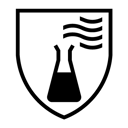EN 13034: chemical protective clothing
13/05/2022

Van Heurck’s protective clothing is fabricated with the highest quality in mind. Our chemical protective clothing, for instance, complies with the European Union’s standard EN 13034. Here, you can learn what that standard entails and how you can recognise clothing that is up to par.
EN 13034
This little code represents the minimum requirements for a certain type of chemical protective clothing. It applies to the type of protective clothing that’s used when there’s a chance the wearer could be exposed to small volumes of liquid chemicals.
The protective clothing that meets this standard is divided into two categories: chemical protective gear (EN 13034 type 6) and partial body protection (EN 13034 type PB 6).
Type 6 protective clothing vs Type PB6 work clothing
Type 6 protective gear covers and protects at least your torso and limbs. Most of these are dungarees or two-part suits, sometimes with hoods, in-boot socks or boot covers. This is the lowest category in chemical protection (1 being the highest) because it only protects the wearer from light splashes and sprays. The more powerful ones protect the body from gases or radioactive particles.
The difference between Type 6 and Type PB6 clothing is that the first one is subjected to a modified spray test on top of normal testing. This test verifies the clothing’s ability to withstand liquid chemicals. A test subject wearing the clothing is sprayed with a mixture of water and colouring. If the clothing passes the test, the colouring can’t permeate it.
This test is not a requirement, though. When the clothing passes all other tests but fails this one or doesn’t undergo this test, it’s marked as ‘Type PB6’.
EN 13034 general testing procedure
All of our chemical protective gear and clothing is subjected to rigorous tests. EN 13034, for instance, requires clothing to be tested for the ability to withstand four kinds of liquid chemicals:
- sulphuric acid (at 30 % concentration in water)
- caustic soda (at 20 % concentration in water)
- o-xylene
- butanol
However, generally speaking, clothing that meets EN 13034 requirements can withstand all acids and alkalis.
The chemicals are tested at a temperature of around 20°C. Performing this test allows us to determine how much of the liquid chemical the clothing can repel and what percentage of the fluid can pass through the clothing within a minute.
The peculiar thing about this standard, though, is that the clothing only needs to pass the test for one of the four liquid chemicals. So, what about the other millions of chemicals? Clearly, this standard - like so many others - has its limitations. But that doesn’t mean this standard doesn’t guarantee quality. On the contrary.
Getting the right protective gear
With these limitations in mind, how would you know you’re buying safe protective clothing for your business? We recommend our clients have a serious look at the chemicals their workers come into contact with. It’s possible that some clothing isn’t tested for the chemicals you work with, but if you know which ones you need to look out for, you can ask for additional tests from your manufacturer.
And remember, when looking for certified clothing, look for this pictogram: